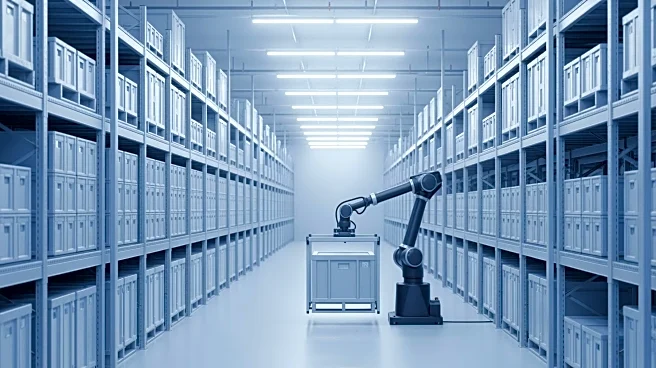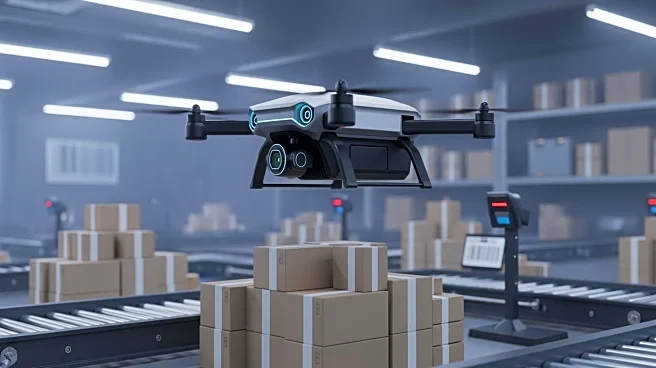What's Happening?
Lucas Systems has introduced a new pick-to-pallet technology aimed at optimizing operations in cold storage warehouses. This technology is designed to handle multiple pallets and temperature-sensitive
shipments simultaneously, improving throughput and maintaining product integrity. The system uses data science to continuously determine the best pallets for a worker’s picking assignment, adjusting as new orders with varying temperature requirements arrive. This solution is particularly beneficial for high-volume cold chain distributors, such as grocery and food service operations, that require efficient handling of multiple pallets while ensuring safety and quality standards.
Why It's Important?
The introduction of this technology by Lucas Systems is significant for the cold chain logistics industry, which is crucial for maintaining the quality and safety of temperature-sensitive goods. By optimizing pallet matching, the technology reduces travel time and boosts picking accuracy, leading to increased productivity and compliance with safety standards. This advancement can lead to cost savings and improved operational efficiency for businesses involved in the distribution of refrigerated and frozen goods, potentially impacting the broader food service and grocery sectors.
What's Next?
As the technology is deployed, businesses in the cold chain logistics sector may experience enhanced operational efficiency and reduced costs. Stakeholders such as grocery chains and food service providers are likely to adopt this technology to improve their distribution processes. The success of this technology could lead to further innovations in warehouse management systems, potentially setting new standards for efficiency and safety in the industry.
Beyond the Headlines
The deployment of Lucas Systems' technology may also have implications for labor management in warehouses, as it could reduce the need for manual intervention and streamline operations. Additionally, the use of data science in logistics could pave the way for more advanced predictive analytics, allowing businesses to anticipate and respond to changes in demand more effectively.











